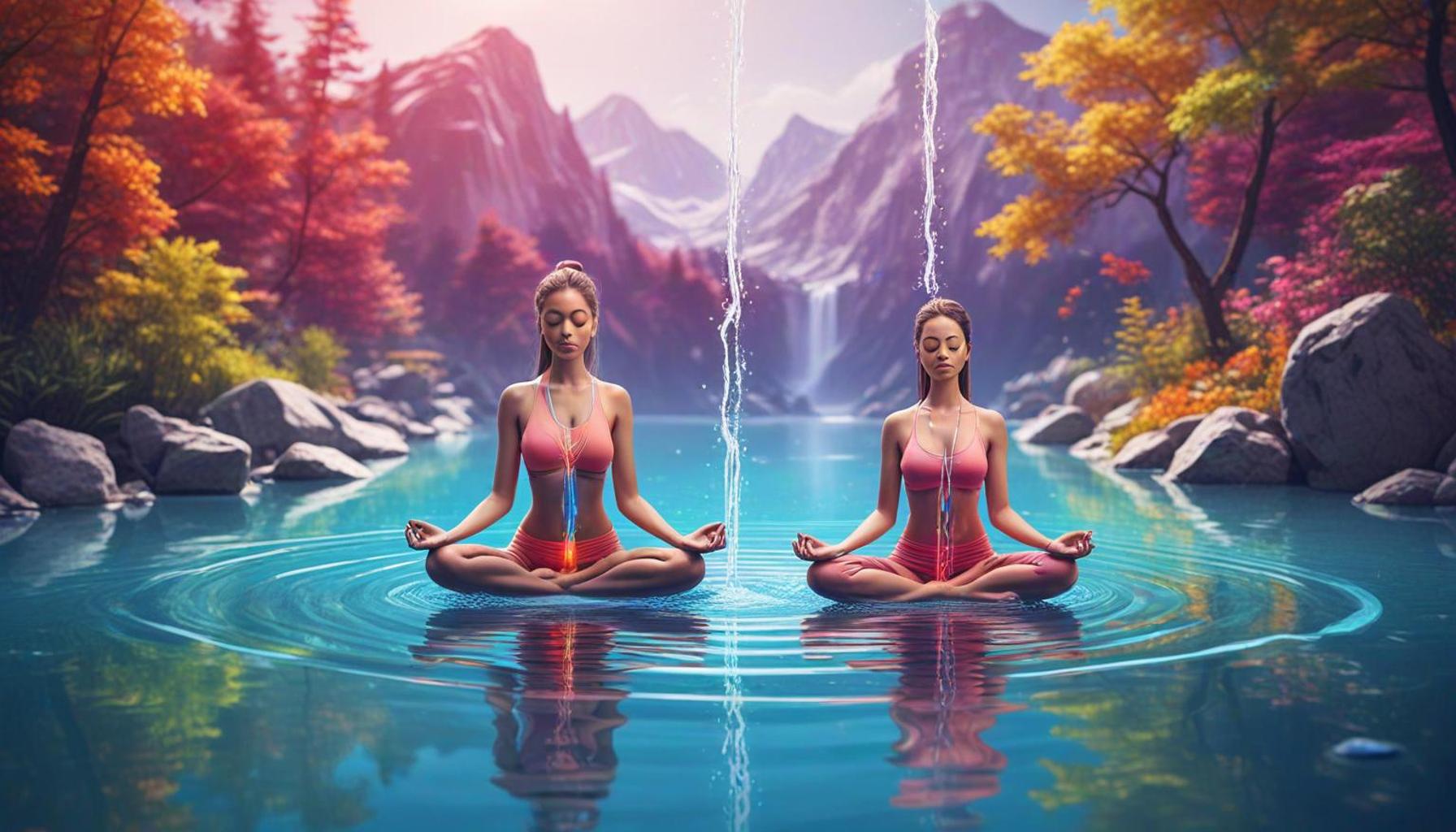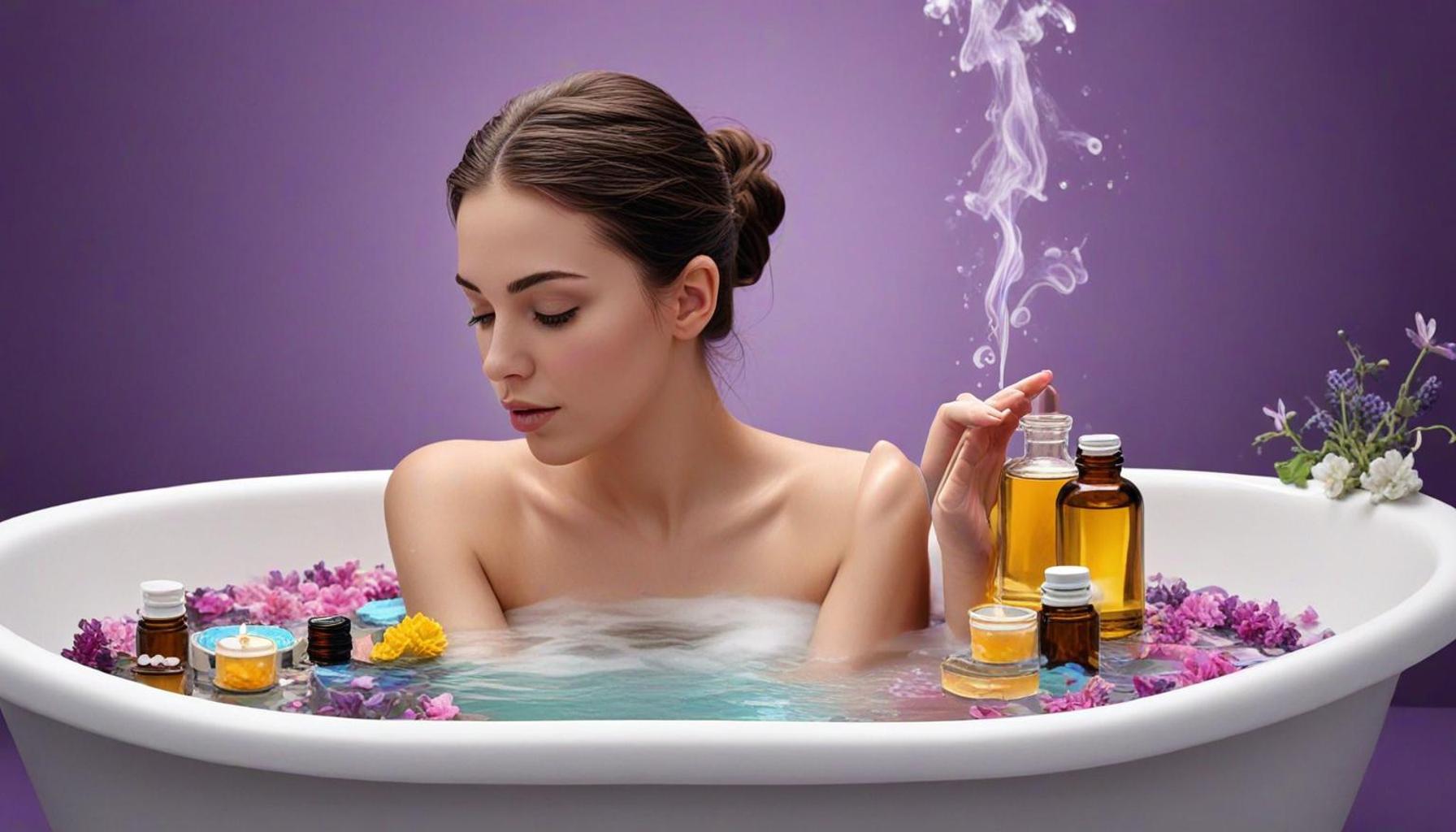The Influence of Water Temperature on Meditation: How to Find the Ideal Balance for Relaxation

The Power of Water Temperature in Enhancing Meditation Practices
Imagine the feeling of retreating from the busy street markets of Lagos to find solace in a tranquil oasis where water flows gently around you. The temperature of the water plays a pivotal role in shaping this experience, especially when it comes to meditation and relaxation. In Nigeria’s diverse climate, from the humid southern regions to the drier north, the interplay between water temperature and meditation becomes more than just a personal preference; it reflects a deeper understanding of how we can optimize our mental and emotional wellbeing.
Warm water, typically around body temperature or slightly higher, is famed for its ability to promote muscle relaxation and ease tension. This can be particularly beneficial after a long day spent navigating Nigeria’s bustling cities. For instance, a warm bath infused with local herbs like neem or ginger—often used in traditional practices—can help soothe not just the body but the mind, creating an ideal atmosphere for meditation. By allowing your muscles to relax, your mind is freer to delve into a state of tranquility, eventually leading to deeper meditative experiences.
On the other hand, cool water offers a refreshing contrast that can invigorate the senses. This stimulation can enhance mental clarity and alertness, effectively grounding your thoughts. Picture a serene river in the cool shade of an Iroko tree—where dippings in the sparkling waters rejuvenate you. In meditation, cool water can assist in overcoming drowsiness while simultaneously helping you maintain focus, making it suitable for morning practices or hot afternoons when energy might wane.
- Temperature control: Striking the right balance between warm and cool water is essential. Experiment with lukewarm water at first, adjusting according to personal comfort and the day’s environmental temperature. Consider incorporating local traditions, such as herbal infusions, to further enhance the sensory experience during your meditation.
As we explore the nuances of this relationship, it’s crucial to understand the impact of local environmental conditions in Nigeria. The hot, moist climate in the south versus the cooler temperatures in the north can influence your choice of water temperature. Additionally, factors like humidity and rainfall also play a role in your overall comfort level.
Personal preferences cannot be overlooked either. Each individual will have a unique comfort zone that significantly affects their meditation practice. What works wonders for one person may lead another to feel unrest. It’s essential to listen to your body and adjust based on your needs and the external environment.

Finally, scientific studies support the observation that temperature can affect relaxation and focus. Research shows that warm environments are linked to increased feelings of safety and comfort, which can enhance meditation effectiveness. Conversely, studies reveal that cooler environments heighten alertness, fostering sharpness and clarity in thinking.
Join us as we unveil the intricacies of water temperature and its profound influence on meditation. Understanding these elements not only provides you with insights for better practices but also guides you towards a peaceful and restorative experience in your daily life.
CHECK OUT: Click here to explore more
Exploring the Spectrum of Water Temperatures for Optimal Meditation
The exploration of water temperature in meditation practices reveals a compelling spectrum that can greatly affect your experience. As you delve into the soothing waters, understanding how different temperatures influence your mental state is key to finding your ideal balance and enhancing relaxation. This becomes particularly poignant as Nigerians engage in various meditative practices, from traditional spiritual rituals to modern mindfulness meditation.
When it comes to warm water, its primary allure lies in the comfort it provides. As the water envelops you in warmth, it encourages not just physical relaxation but also mentally prepares you to enter a contemplative state. Numerous wellness centers and spas across Nigeria utilize warm water therapy, offering experiences that combine local herbal knowledge with modern relaxation techniques. The soothing warmth can help alleviate muscle tension and enhance blood circulation, creating a barrier against daily stressors. This combination makes it an ideal option for those seeking a deeper connection during their meditation.
Conversely, the refreshing nature of cool water brings its own set of benefits. Engaging with cooler temperatures can increase your alertness and enhance your capacity to focus. During hot summer months in Nigeria, a cool dip in a natural spring or a quick cleanse with cool water can serve as a catalyst for revitalization, lifting your spirits and sharpening your mind. This stimulating environment can offer the right energy boost needed for morning meditation sessions or times when you feel lethargic. Drawing this parallel, consider the practice of “abdominal breathing” often used in meditation—cool water can help maintain clear breathing patterns while keeping you grounded and focused.
- Adjusting to Local Conditions: Your choice of water temperature should also reflect local climate conditions. Experimenting with slightly varying temperatures can help tailor your practice to the season—from warm baths during the chilly Harmattan winds to cool immersions in the humid heat of the rainy season.
- Personal Comfort Level: Self-awareness is crucial. You must consider your comfort zone when selecting your water temperature, as what may be soothing for one person could be uncomfortable for another.
- Mindful Experimentation: Don’t hesitate to explore different temperature ranges. Start with lukewarm water, gradually moving to cooler or warmer settings to find your sweet spot that transcends mere relaxation and nudges you towards mindfulness.
As we embark on this meditative journey, we should also highlight the scientific underpinnings that support the effects of water temperature on relaxation. Research reflects that warm environments often create feelings of safety and comfort, enhancing our ability to enter profound meditative states. On the flip side, cooler environments are known to boost mental agility and clarity, promoting a state of focused alertness beneficial for mindfulness practices.
Understanding these dynamics is essential. Join us as we dissect and analyze the intricate relationship between water temperature and meditation, aiming to empower practitioners with the knowledge to harness this element effectively in their quest for tranquility and personal growth.
| Advantage | Details |
|---|---|
| Enhanced Relaxation | Warm water can significantly promote deeper states of relaxation during meditation, allowing practitioners to reach their zen state more easily. |
| Increased Focus | Using cooler water helps invigorate the body, enhancing alertness, which may support practitioners in achieving greater mindfulness while meditating. |
Exploring the influence of water temperature on meditation brings intriguing insights into the benefits of varying thermal settings. Warm water baths provide a calming effect that can help individuals let go of daily stressors, facilitating a peaceful mental state. Research has demonstrated that warmth can soothe muscle tension, thus allowing meditative practices to be more profound and fulfilling. On the flip side, immersing oneself in cooler water can invigorate the senses, sharpening focus and enhancing concentration. This contrast makes it evident that the choice of temperature can either ground practitioners in serenity or awaken their focus for heightened mindfulness. Finding the ideal balance becomes essential to tailor the meditation experience according to personal preferences and desired outcomes. The exploration of water temperature as a tool in meditation not only opens new doors to relaxation techniques but also encourages further dialogue on integrating nature’s elements to boost mental well-being.
RECOMMENDED: Check out this similar article
Harnessing Temperature: Guidelines for Effective Water Meditation
As we navigate the interplay between water temperature and meditation, it is imperative to establish practical guidelines that cater to individual preferences while leveraging the benefits of warmth and coolness. Understanding how to manipulate these variables can foster a deeper meditative experience, particularly for practitioners in Nigeria, where access to various water sources can enhance their journey toward serenity.
Preventing Temperature Shock is vital to maximizing meditation benefits. Jumping directly into extreme temperatures, whether warm or cool, can lead to discomfort and distract from the intended focus of your practice. For example, while it might be tempting to dive into a cold river after a hot day, consider slowly acclimatizing your body to the changing temperature. Not only does this technique promote physical ease, but it also enhances mental readiness, allowing for a smoother transition into meditation.
Moreover, integrating ambient conditions into your meditation process can enhance your experience. When practicing near natural bodies of water, observe the subtle changes in temperature as day turns to night. The soothing calmness of early morning dew, combined with the tranquil sound of water, can set the stage for a profound meditative experience. On the other hand, afternoon sessions by a lake can take advantage of the water’s natural warmth, allowing for a slower, more languid meditative state.
- Community Practices: Joining local meditation groups can offer insights into how fellow practitioners in Nigeria navigate the challenges of water temperature in their sessions. Many communities have unique approaches, incorporating local customs and shared experiences that promote collective relaxation.
- Seasonal Adjustments: Throughout Nigeria, the climate varies significantly between regions and seasons. For instance, those in the tropical southern regions may find that cooler water enhances their practice in the jungles, whereas individuals in the drier northern regions may feel grounded by warm baths during the Harmattan season.
Additionally, research indicates that engaging with water aids in stress regulation. Studies show that warm water not only facilitates relaxation by triggering the release of endorphins but also supports a decrease in the levels of cortisol—commonly known as the stress hormone. Regular exposure to controlled temperatures in water can further optimize these hormonal responses, creating a more fertile ground for meditation.
Emphasizing a holistic approach to your practice encourages introspection and self-discovery. Experimenting with water temperature should be a journey in itself—inviting curiosity rather than strict protocols. Utilize tools such as a thermometer to gauge comfort levels and identify the optimum warm or cool range that allows you to relax wholly. Maintaining a reflective meditation journal can also help track feelings associated with different temperatures, enabling you to map out patterns tailored uniquely to your needs.
As a growing number of mindfulness techniques incorporate water, consider visiting therapeutic locations that offer varied temperature experiences. For instance, indulging in hot spring resorts along the coast or natural mineral baths can deepen the connection between water and meditation. Likewise, resorts that provide facilities for cold plunge sessions offer dynamic opportunities to explore the energizing influence of cooler temperatures on awareness and focus.
With the boundless possibilities that water presents, practitioners should emphasize ongoing reflection and adaptation in their meditation journeys. By thoughtfully engaging with water temperature, you can unlock new dimensions of understanding and harness relaxation, enhancing your overall meditative experience and well-being.
CHECK OUT: Click here to explore more
Final Thoughts on Water Temperature and Meditation
In conclusion, the exploration of water temperature as a catalyst for enhancing the meditation experience opens exciting avenues for practitioners, particularly within the diverse landscapes of Nigeria. By understanding the symbiotic relationship between warm and cool water and the mental state, individuals can tailor their meditation rituals to optimize relaxation and foster deeper mindfulness.
As outlined, the principles of temperature adjustment and gradual acclimatization are fundamental for creating a serene environment where one can fully immerse themselves in the meditative process. Paying attention to the shift in ambient conditions around natural water bodies further enriches this practice, inviting you to engage with your surroundings in a mindful manner. Whether it’s the calming coolness of a river or the gentle warmth of a mineral bath, identifying what aligns best with your body and spirit is essential.
Additionally, leveraging local community practices and seasonal nuances can provide new insights, fostering a sense of connection and shared experience. This cultural exchange not only enhances the individual practice but also strengthens collective mindfulness. As water continues to merge with the art of meditation, keep in mind that the journey is not rigid; rather, it thrives on experimentation and personal reflection.
Ultimately, the balance between water temperature and meditation plays a pivotal role in unlocking comprehensive relaxation and stress relief. By adopting a flexible approach that incorporates both personal preferences and external conditions, you can transform your meditative practices into profoundly enriching experiences. Dive deeper and explore the nuances of this relationship, for the ideal equilibrium may just lead you to a more tranquil and balanced existence.


